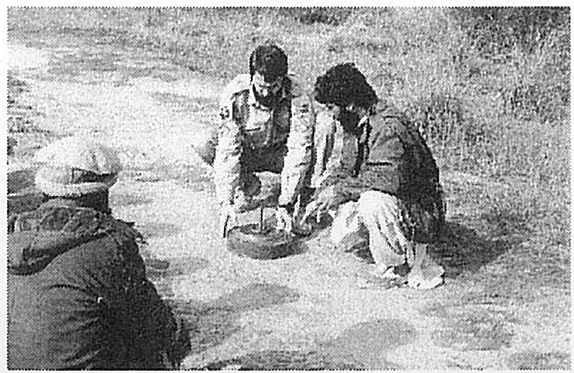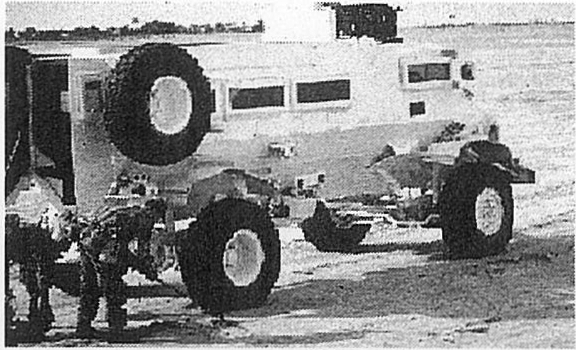Introduction
During World War I at Paschendaele the British Forces, including Australian troops, used tunnellers from the London underground and coal miners to dig14 mines and place a large amount of Ammontal (a new explosive) under the German Lines.
The Commander of the British 2nd Army (Gen Plumer) had realised a breakthrough was not practical (unusual thinking at that time) and the tactic was that of attrition. He had been there for a while and had a well-developed plan. On the day of the attack the mines were detonated (12 exploded under the Messines Ridge) creating a massive gap in the German line. It was said the explosion, the largest to that time, was heard in Paris, rattled windows in London but was felt at Paschendaele (Dr Jackson Hughes, Flinders University, Adelaide).
The Australians occupied the devastation and duly repelled the expected counter attack, killing as many of the enemy as possible. A few years later one of the two mines left exploded. It pays to remember if you are walking the battlefields of Western Europe, there is still one “remaining”. Every year a few people are killed or maimed by land mines remaining on the World War II battlefields of Poland, Libya, Egypt and other countries.
From such a spectacular origin, landmines have been used in conflicts since as a tactical battlefield weapon designed to protect one’s own force and to direct the enemy. Routine army doctrine required the mapping of the minefield and its protection by fire to minimize enemy clearance and penetration.
During the Australian commitment in the Vietnam War the minefield laid by Brig S. Graham was not protected,1and the enemy forcefully co-opted civilians who lifted these M16 “Jumping Jack” mines and relocated them as booby traps, wounding many Australians.
Mine Effects
There are anti-personnel landmines (APM). Anti-tank mines (ATM) and command detonated mines, for example, the Claymore, designed to break up amassed Infantry charge. The APMs and ATMs are normally pressured sensitive, and the M16 in South Vietnam produced two explosions on release of pressure. The first explosion caused the weapon to jump to waist level, whereupon the second explosion devastated the individual and troops nearby. Towards the end of the Australian commitment, the second explosion did not always occur due to degradation of the weapon, much to the relief of the victims. (Author’s personal experience, 1971)
Nowadays, the APM is the most widespread device probably causing more destruction than any other weapon available, with an estimated 65 to 113 million laid, polluting third world countries and preventing the use of essential agricultural land. 2 These figures have recently been disputed by Bottigliero who asserts that
90% of these mines are fictional. 3 Their whole way of life is modified, contributing to malnutrition and disease by disrupting public health programs. People would rather drink dirty but “mine-safe” water.
Over 2000 individuals are injured by landmines every month somewhere in the world, and 30 to 40 per cent will die. As the families of victims are so dependant on their agricultural workers in a third world subsistence environment, the social and survival damage is extensive, notwithstanding the difficulties of caring for a maimed child.

Australian United Nations Deminer in Afghanistan conducting training for clearance operations on a TMN anti-tank mine, 1990. (Photograph: Courtesy of Major G. Membrey)
Disarmament
In 1992, the International Campaign to Ban Landmines (ICBL) commenced and, under the auspices of eminent people such as the late Princess of Wales and the UN Secretary-General Kofi Annan, resulted in the Ottawa Treaty coming into force on 01 March 1999. 5 This treaty bans “the use, stockpiling, production and transfer of anti-personal landmines (APMs) and their destruction.” 2 It also requires the destruction of stockpiles within 4 years and the clearing of minefields within 10 years. Rehabilitation of victims is part of the treaty and, furthermore, annual compliance reports are to be forwarded to the United Nations. The treaty only bans APMs and not ATMs, a difference that can be exploited. Non -victim-activated or command detonated devices also escape treaty regulation, as do the Shikousei Sandan, or “projectile scattering”, devices under human controls Australia has signed while the United States, Russia, China, India, Pakistan and the two Koreas, plus other countries, have not. 7Recently, an 18-nation conference, including 13 non-signatories, was held in the Arab world with a view to progressing the ban.
Injury Management
The landmine injury requires first aid and evacuation. The injury produced by the weapon normally consists of below-knee traumatic amputation, peeling back the soft tissue along fascial lines. This usually preserves the gastrocnemius muscle, it’s neuro-vascular supply and associated skin. After extensive debridement, a delayed primary closure is performed, fashioning a below-knee amputation flap utilising the skin and muscle. Debridement should include the depths of all tissue planes and should be painstaking and aggressive. It is wise to remember the medullary cavity of the bone can be contaminated, and the author has removed pieces of thong from this area. The blast forces debris, shoe, the involved leg and dirt into the “good” leg which normally requires extensive surgical work to save, including delayed primary closure and split skin grafting. Antibiotics are NO substitute for debridement.
The survivability of the good” limb probably equals the ability of the patient to rehabilitate and perform gainful agricultural work in a subsistence environment, allowing survival. The rehabilitation includes prosthetic fitting which non-government organisations such as Handicap International and the International Committee of the Red Cross normally provide.

United Nations flail destroying anti-tank landmines (Russian TMN) in Afghanistan, 1990. (Photograph: Courtesy of Major K. Norman)
Countermeasures
Military research is being carried out with Australian contributing to the development of the mine-resistant boot and the mine-resistant vehicles. A mark 2 version of the Werewolf mine-resistant vehicle is being tested in Namibia with underbody shaping and ceramic armour. 10 My personal view is that the wheels of the vehicle should be placed at a distance from the body of the vehicle, either sideways or forward and rear so that when the mine is detonated both the wheel and axle are destroyed, while the body of the vehicle remaining intact. If this concept could be developed further, it is possible that not only improved survivability could occur but also quick repairability, as has been demonstrated by vehicles in South Africa.
An Adelaide-based company (Minelab) has developed the FlA4 detector, which detects the metal firing pin in the millions of plastic APMs in magnetic soils. Their research is leading to developments in the detection of mines ahead of moving vehicles.!!

Australian United Nation soldiers clearing a mined road in Namibia, 1989.
(Photograph: Courtesy of Major K. Norman)
The Future
The future is probably reflected in the past and, if there is a need for indiscriminate weapons, rogue states and companies will fulfil that need. Vigilance by the Ottawa signatories will be required and the possibility of class actions by the victims against the companies could occur. It is my understanding that General Motors in the United States initially made landmines and because of public opinion was forced to cease. The mines were then made by the Fiat Company in Italy and, after pressure there, are now being made in Algeria. The industry is certainly innovative. Biodegradable mines are available. New detector technology is required, and the military requires an alternative barrier system, which could detect friend from foe and be easily deactivated by friendly forces.
In conclusion, air warfare is increasingly tending to be discriminate, as seen in Yugoslavia in 1999, and personal weapons may well develop that way in order to minimise “collateral damage”. If the future of warfare in civilized countries is to support human values perse, as it appears in Kosovo, it would be a pity to devastate the population the force was trying to protect by leaving weapons behind, polluting their environment.






